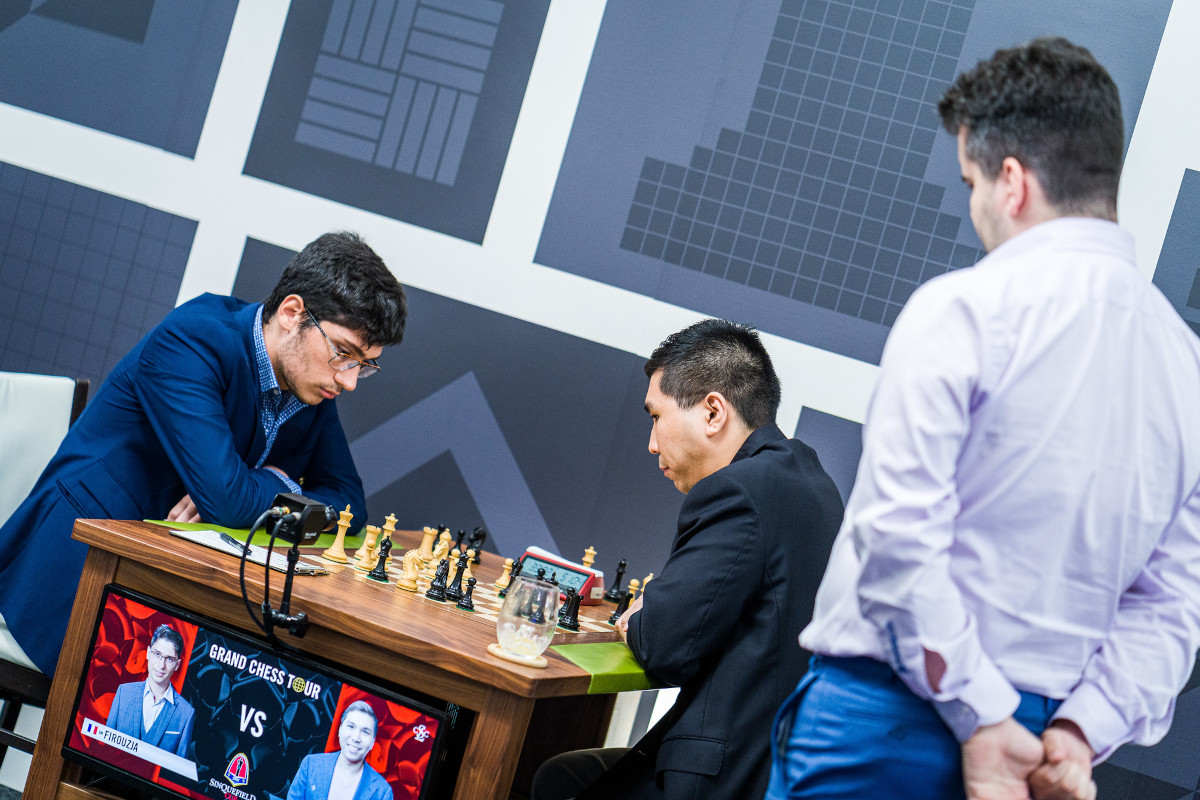Firouzja might win it all in St. Louis
Less than two weeks ago, Alireza Firouzja stunned the chess world (once again) by winning the Saint Louis Rapid & Blitz tournament with four rounds to spare. By doing so, he kept the promise he had made to himself: to win the first tournament he ever plays at the famed Saint Louis Chess Club.
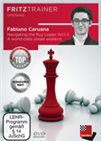 The Ruy Lopez is one of the oldest openings which continues to enjoy high popularity from club level to the absolute world top. In this video series, American super GM Fabiano Caruana, talking to IM Oliver Reeh, presents a complete repertoire for White.
The Ruy Lopez is one of the oldest openings which continues to enjoy high popularity from club level to the absolute world top. In this video series, American super GM Fabiano Caruana, talking to IM Oliver Reeh, presents a complete repertoire for White.Now, at the Sinquefield Cup, after beating former sole leader Wesley So, he has good chances of also winning the classical tournament organized in the US’s chess capital. Moreover, he is now the clear favourite to grab first place at the Grand Chess Tour overall standings. The youngster entered the tournament in second place, a point behind Maxime Vachier-Lagrave. Since MVL is having a rough time defending his title, only a series of unfavourable results would prevent Firouzja from winning the tour.
Going into the final round, Firouzja is sharing first place with Ian Nepomniachtchi and Fabiano Caruana. However, it is all but impossible for Caruana to win the event, since he will not play in Sunday’s final round, when he was supposed to face Magnus Carlsen (Caruana does have a non-zero chance of sharing first place in the end, though).
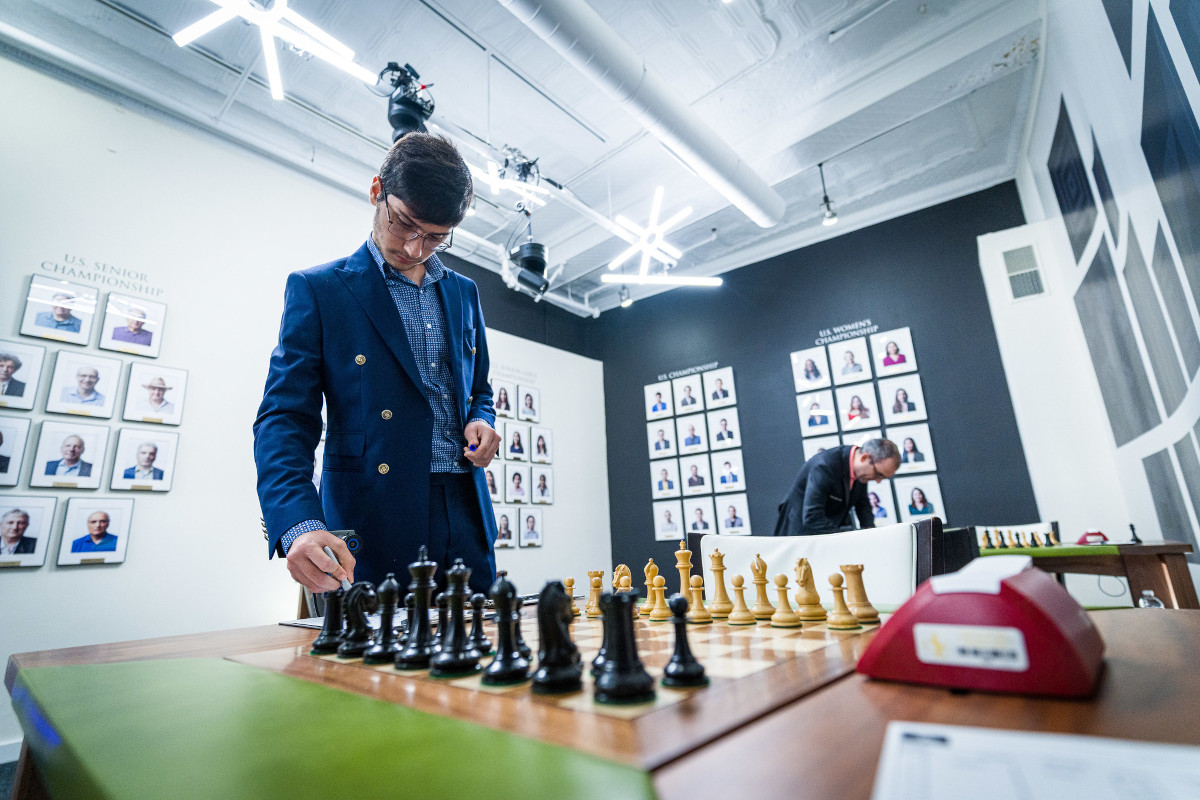
Alireza Firouzja is the big favourite to win the GCT | Photo: Lennart Ootes
So misses a major chance
It all seemed to be going Wesley So’s way about two hours into round 8. So entered the round as sole leader, came from having a rest day and had a clearly favourable position (with black) out of the opening — a very rare occurrence in games between top GMs.
Alireza Firouzja, playing white, was visibly worried. The youngster knew he needed to play precisely to prevent a quick loss, as he spent close to a half hour on move 16. Conversely, So was well aware of the fact that he was in an enviable position, with his fate in his own hands. Looking for the most accurate way to make progress, So thought for 10 minutes before (correctly) sacrificing his bishop on h3.
White is in deep trouble, with his dark-squared bishop far away from the action, while Black’s army is well-positioned to go for a direct attack. But already after 17...Bxh3 18.Nd3 So failed to find a remarkable, quiet move which would have markedly reduced Firouzja’s chances of escaping with a draw.
So played the direct 18...Qg6 instead of 18...Rad8
Black is still better here, but after 19.Nh4 (what else?) Qg5 20.Nxc5 it is still necessary to calculate long lines in order to find the correct path to victory.
This becomes all the more apparent if we consider the alternative 18...Rad8, which — importantly — pins the knight that defends two crucial squares: f2 and f4. Furthermore, from a human point of view, it leaves Firouzja in a bind, with most obvious defensive moves failing tactically in the ensuing position:
- 19.Qe2, unpinning, fails to 19...Bxg2 or 19...Rxd3 followed by 20...Nf4
- 19.gxh3 allows 19...Nf4 and White needs to give up the queen
- After 19.e5, Black’s 19...Qg6 also threatens to capture on d3 (diagram)
- The best defensive move is 19.Nd4, but in this case the knight would be unable to jump to h4, as in the game
In the game, as it often happens, So not only gave up his advantage but, unable to adjust to the new situation on the board, ended up blundering and losing the game. The decisive mistake came on move 24.
White is already in the driver’s seat, with his dark-squared bishop now threatening to wreak havoc on the long diagonal. The one move that would have kept the battle going was 24...Rxb3, which meant entering an endgame a piece down after 25.Bd4 Qxc4 26.Be3 Qxg4+ 27.hxg4 Rb4 28.gxh5 Rxe5 (you can try your own variations on the diagram above).
Instead, So went for 24...g6, defending the knight. Firouzja did not take long to find the forcing sequence 25.Ba3 Qb6 26.e6, winning.
Now it is Black whose army is unable to find coordination in defence. So threw in the towel six moves later.
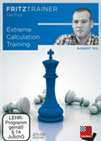 Special attention will be paid to Intermediate Moves, Quiet Moves, Sacrifices on Empty Squares, Mating Patterns, Ignoring Opponents Threat, Calculation in Defence and Method of Comparison. Plus 50 interactive examples to test your knowledge.
Special attention will be paid to Intermediate Moves, Quiet Moves, Sacrifices on Empty Squares, Mating Patterns, Ignoring Opponents Threat, Calculation in Defence and Method of Comparison. Plus 50 interactive examples to test your knowledge.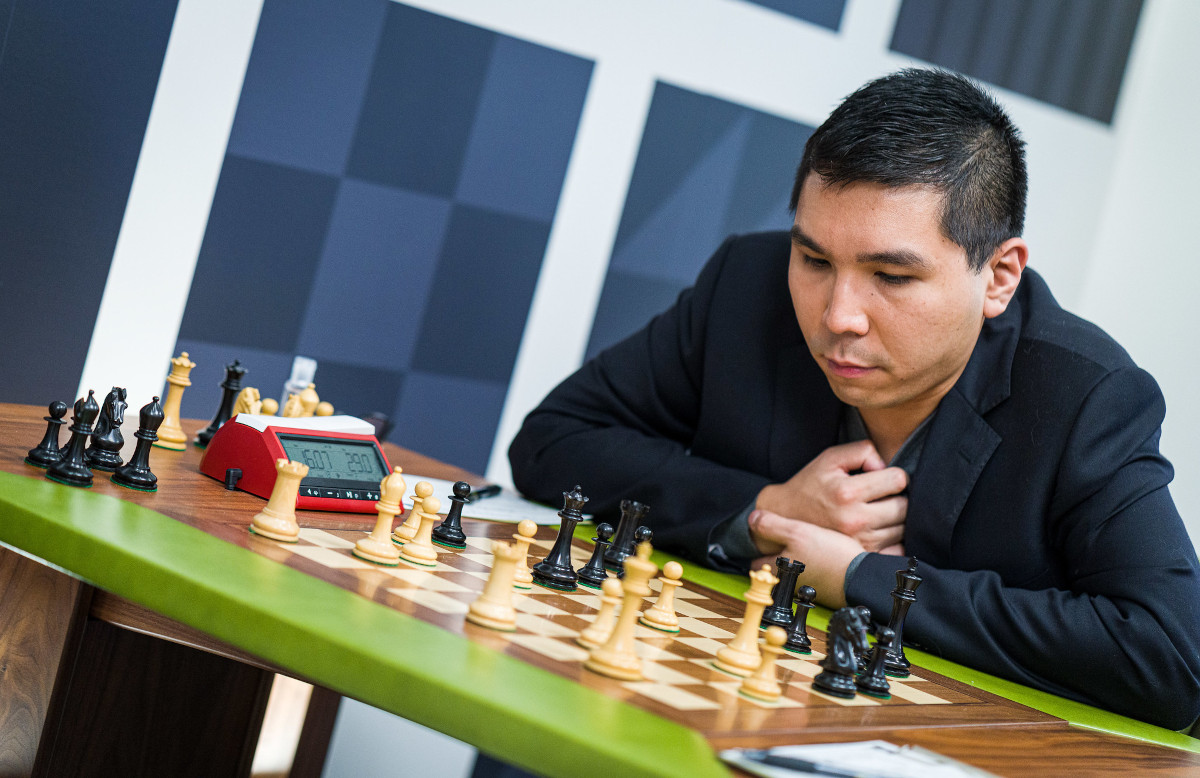
Wesley So now stands a half point behind the leaders | Photo: Lennart Ootes
Nepo wins rollercoaster
Much like So, Ian Nepomniachtchi kicked off the day in style, as the Russian got the upper hand out of the opening in his game with black against Levon Aronian. Moreover, following the same trend, Nepo also lost his advantage in the middlegame.
Black is two pawns up and has the more active pieces, with White’s bishop pair stuck on the first rank merely trying to keep things together. This was high time for Nepo to activate his worst piece in the position, i.e. the a7-knight.
Instead of 29...Nac5 (which looks risky but works tactically) or 29. Nc7 (which is more consolidating), Nepo opted for 29...c5, giving his resourceful opponent a chance to relieve the pressure via 30.g4. Aronian did not take long to find this move, getting counterchances.
Unlike in the Firouzja v So game, however, White does not have a way to immediately grab the initiative, and he is still material down. Aronian kept the dynamic balance for a while, but Nepo regained the advantage after the time control.
Resignation came in the following position.
White did get counterplay with his queen and bishop, but the black knight is an excellent defender from e6. Nepo thus grabbed his second win of the event — he had beaten Firouzja in the second round.
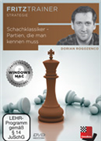 As the author explains in the introductory video, knowing the classic games from the past enriches your chess understanding in general, and helps to improve the level of your own games.
As the author explains in the introductory video, knowing the classic games from the past enriches your chess understanding in general, and helps to improve the level of your own games.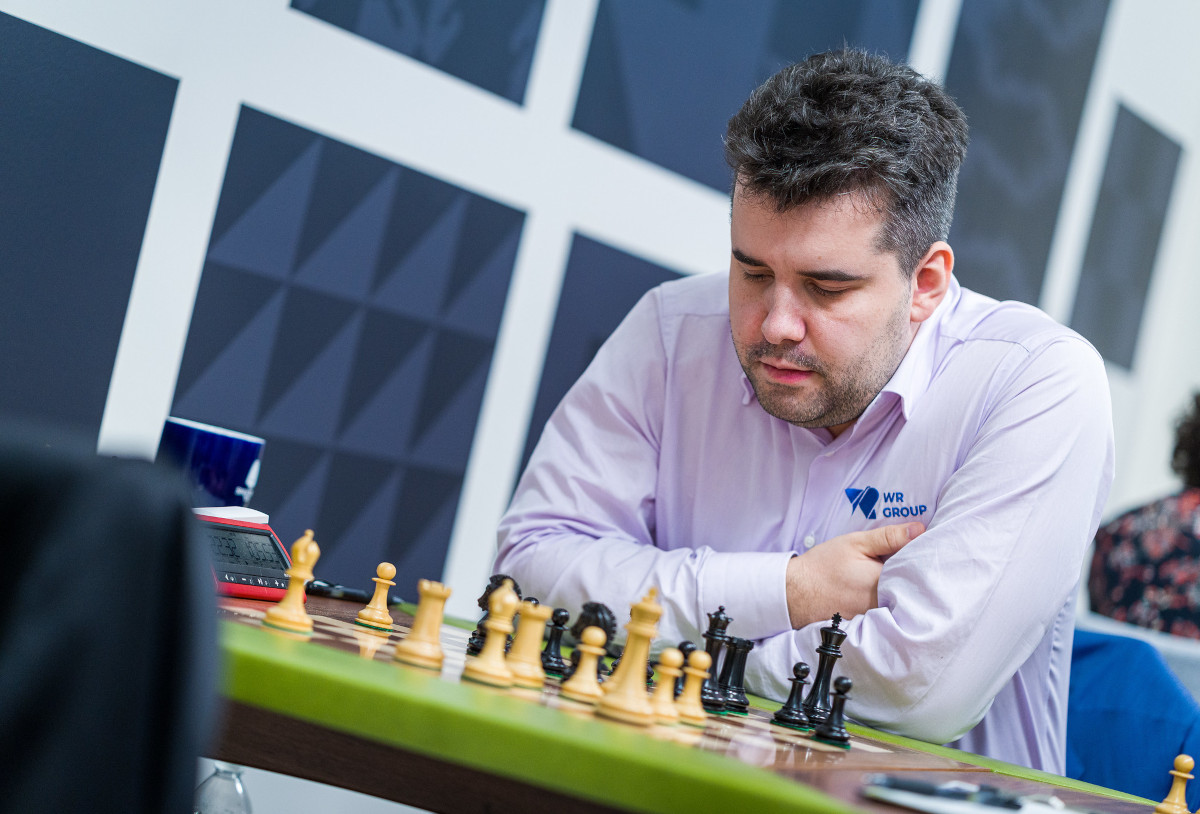
Ian Nepomniachtchi | Photo: Lennart Ootes
Caruana beats Niemann with black
Out of the ten decisive games played until round 7 (including Carlsen’s), only two had favoured the player with the black pieces. After the opening phase of round 8, it seemed quite likely that we would get to see three wins for black on a single day. As mentioned above, So failed to make the most of his advantage, unlike Nepo — and Caruana, who got the better of Hans Niemann from the black side of yet another strategic battle.
When the time control was reached, Caruana had an extra exchange, but Niemann had the bishop pair and an extra pawn.
It was a tough technical task, but Caruana eventually managed to score a 69-move win. The US grandmater finished the tournament with a 4½/8 score — he will not play on Sunday, when he was supposed to face Carlsen.
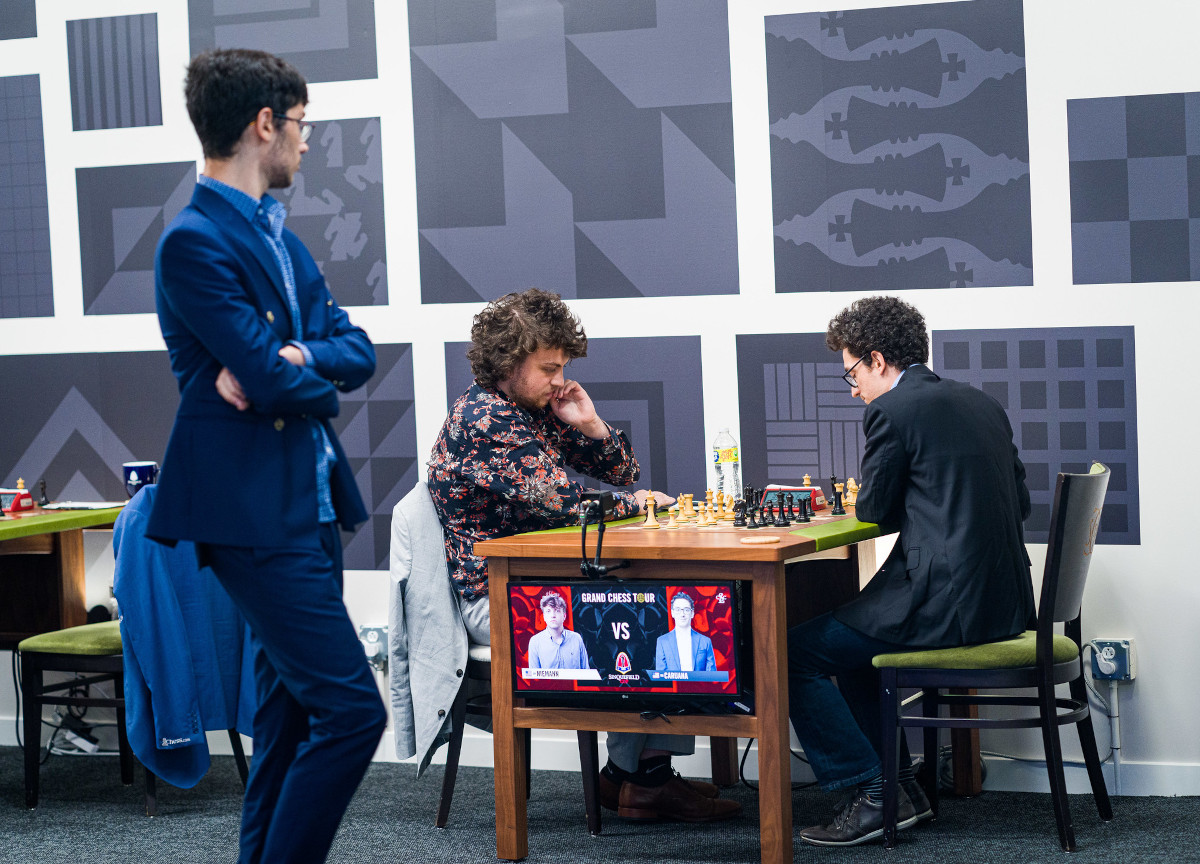
Fabiano Caruana defeated Hans Niemann to end his tournament | Photo: Lennart Ootes
Round 8 results
Standings after round 8
All games
Links
